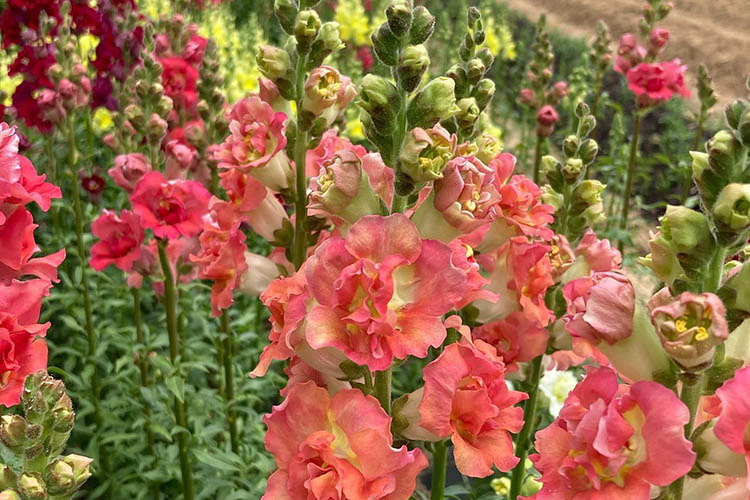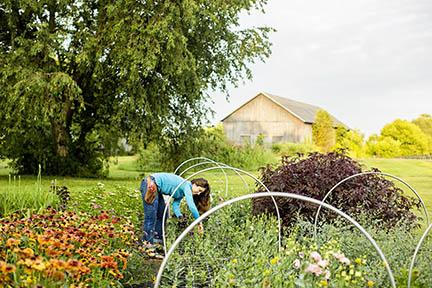July is Kentucky-grown Cut Flower Month
July is Kentucky-grown Cut Flower Month

Published on Jun. 29, 2021
LEXINGTON, Ky., —The Kentucky Horticulture Council and University of Kentucky Cooperative Extension will highlight many of Kentucky’s cut flower growers on KHC’s social media channels every day in July. Viewers can learn how Kentucky’s farmer-florists make their products available to customers through farmers markets, on-farm sales, pop-up shops, community supported agriculture and more.
“The diversity of flowers we can grow commercially in Kentucky goes well beyond the common rose, mum and lily crops,” said Kristin Hildabrand, Warren County horticulture extension agent. “Kentucky cut flower growers can produce magnificent displays of daffodils and ranunculus in the spring, striking sunflower and zinnia bouquets for summer, as well as a variety of other attractive blooms and foliage throughout the fall growing season.”

Wild Roots Farmer Florist is one of the many cut flower producers in the state. Photo by Alexis Sheffield
While about 80% of cut flowers in the United States are imported, Kentucky conditions are well-suited for commercial production. The commonwealth boasts more than 90 cut flower operations. The number of farmer-florists has increased by 30% in the past five years.
“Cut flowers are a rapidly expanding industry segment in Kentucky horticulture and can be quite profitable for growers,” said Cindy Finneseth, KHC executive director. “Most of our growers sell directly to consumers, with an increasing number of farms selling through retail sites and wholesale markets.”
July isn’t the only month for buying Kentucky-grown flowers. They are available almost year-round.
“Using crop planning strategies and protected agriculture technologies, growers can manage production for near year-round harvest,” said Alexis Sheffield, Boyle County horticulture agent. “From early season crops like anemones and ranunculus in early March to late season holly berries and spruce in December, flower producers have many opportunities.”
The Kentucky Horticulture Council and UK horticulture agents have partnered with UK’s Center for Crop Diversification to make a map available of many Kentucky operations at https://uk-horticulture.github.io/KY-Cut-Flowers/.
To follow the daily features, visit @KYHortCouncil on Facebook, Instagram or Twitter.
The UK Cooperative Extension Service is part of the UK College of Agriculture, Food and Environment. With its land-grant partner, Kentucky State University, the UK Cooperative Extension Service brings the university to the people in their local communities, addressing issues of importance to all Kentuckians.
Horticulture


